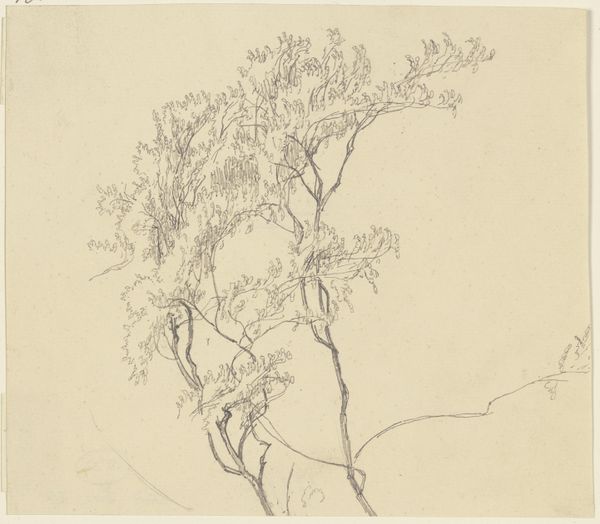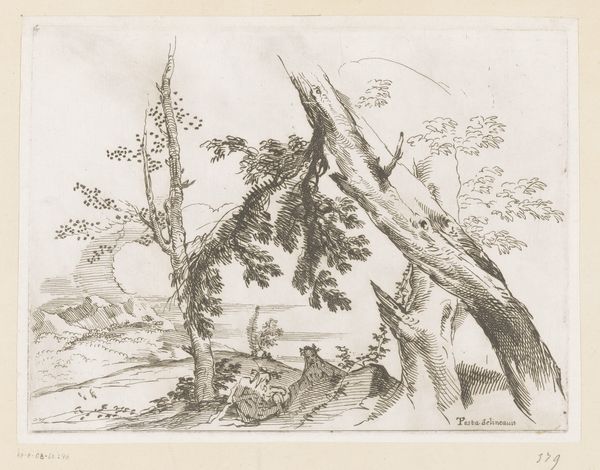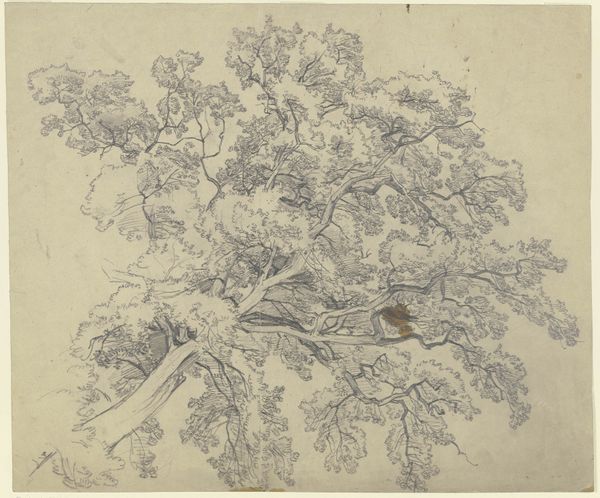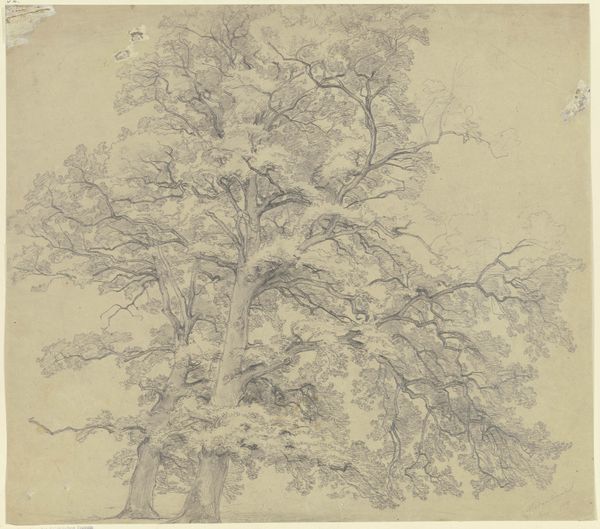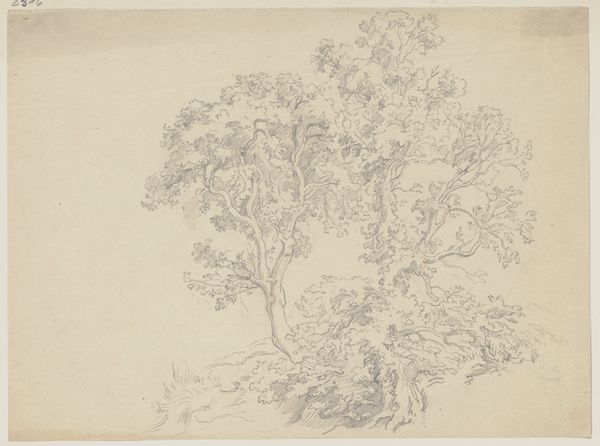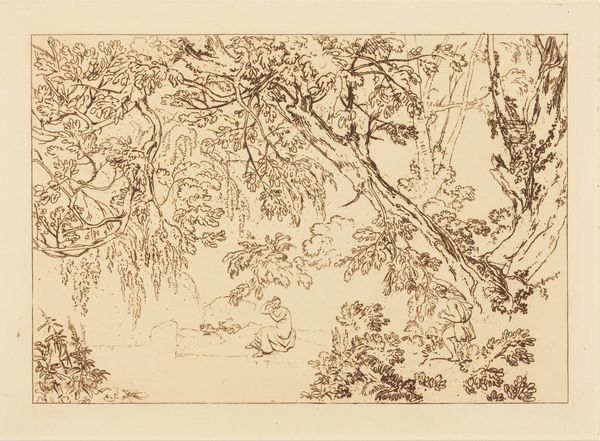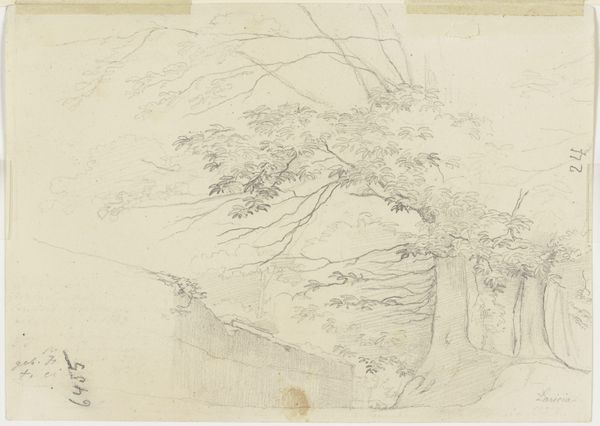
drawing, pencil
#
drawing
#
landscape
#
pencil
#
academic-art
#
realism
Dimensions: height 257 mm, width 278 mm
Copyright: Rijks Museum: Open Domain
Curator: Frederik Hendrik Weissenbruch created this piece, entitled "Boomstudies", sometime between 1838 and 1887. It's a pencil drawing, currently held in the Rijksmuseum collection. The drawing presents studies of trees. What is your immediate impression? Editor: They feel a little… lonely, maybe? They're beautifully rendered, these isolated trees, but something about separating them from a larger landscape feels like a statement, a quiet resistance even. Curator: I think you’re onto something there. Weissenbruch was part of the Hague School, known for their realistic depictions of the Dutch landscape, and, in some ways, representing a reaction to urban and industrial growth. Perhaps these individual tree studies are about emphasizing the individual natural object as an escape from modernity? Editor: Exactly. Look at the detail in the linework, each branch seems to carry a specific weight. It feels like an exercise in observation, almost reverential. Were there contemporary dialogues around deforestation occurring that may have fueled an appreciation for landscape? Curator: Most definitely. Weissenbruch came from a family of artists, deeply enmeshed in artistic circles grappling with the role of art in society, especially during this era of rapid industrialization and urbanization. Focusing on capturing these details suggests an appreciation for the simple aspects of landscape as an expression of national identity, especially as this new, modern society advanced. Editor: And by singling out the trees, we're forced to consider their individuality, their vulnerability perhaps. Almost like portraits, each study displaying unique characteristics. Maybe that's why it feels a little melancholy – there's an acknowledgment of the transient nature of the natural world. Curator: That brings into focus how artistic studies like "Boomstudies" played a role in shaping perceptions and narratives about the environment during a period of social transformation, not only of the land itself, but also culturally through landscape paintings and artistic appreciation for the local world. Editor: So much conveyed in these simple studies. Thank you for shedding light on the drawing’s history. Curator: Likewise, your perspective makes me view it through a different lens, emphasizing the role of social contexts and artistic approaches of its time.
Comments
No comments
Be the first to comment and join the conversation on the ultimate creative platform.


